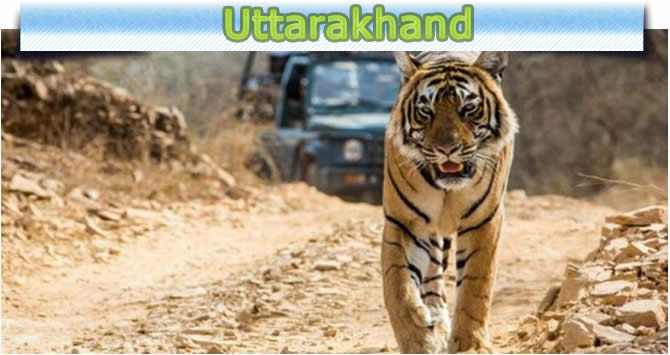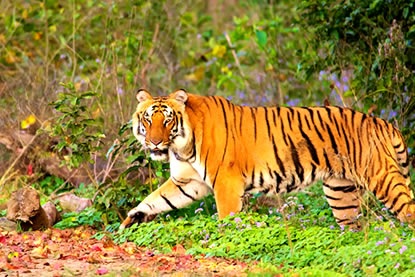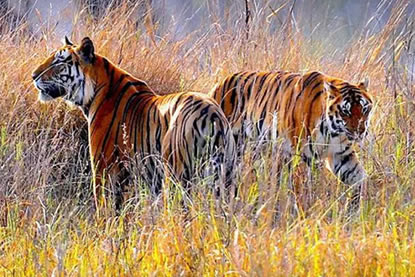Uttarakhand – Wildlife Adventure
Where is Uttarakhand
Uttarakhand earlier known as Uttaranchal is a state in the northern part of India which is also a prominent tourist destination in Northern India. It is often referred to as the Devabhumi. The literal meaning is Land of the Gods. The name is so famous due to numerous Hindu temples and pilgrimage centers found throughout the state. Uttarakhand is known for the natural environment of the Himalayas, the Bhabar and the Terai regions. On 9 November 2000, Uttarakhand became the 27th state of the Republic of India, being carved from the Himalayan districts of Uttar Pradesh. It borders with Tibet Autonomous Region of China to the north, the Sudurpashchim Pradesh of Nepal to the east, the Indian states of Uttar Pradesh to the south and Himachal Pradesh to the west and north-west. The state is divided into two divisions, Garhwal and Kumaon, with a total of 13 districts. The winter capital of Uttarakhand is Dehradun, the largest city of the state, which is a railhead. On 4 March 2020, Gairsain, a town in Chamoli District, was declared the summer capital of the state. The High Court of the state is located in Nainital. view more
Wildlife Tourism in Uttarakhand
Wildlife in Uttarakhand is a major reason why travelers head to this state. The state is bestowed with expanse of greenery where a rich biodiversity prevails. As a whole, Uttarakhand has 6 national parks and 4 wildlife sanctuaries. Jim Corbett National Park is a popular national park of Uttarakhand, where you have fair chances of spotting a tiger as it a tiger reserve too. view more
Forests & Mountains
Uttarakhand has a total area of 53,483 km2 of which 86% is mountainous and 65% is covered by forest. Most of the northern part of the state is covered by high Himalayan peaks and glaciers. In the first half of the nineteenth century, the expanding development of Indian roads, railways and other physical infrastructure was giving rise to concerns over indiscriminate logging, particularly in the Himalaya. Two of the most important rivers in Hinduism originate in the glaciers of Uttarakhand, the Ganges at Gangotri and the Yamuna at Yamunotri. They are fed by myriad lakes, glacial melts and streams. These two along with Badrinath and Kedarnath form the Chota Char Dham, a holy pilgrimage for the Hindus. view more
Vegetation & Wildlife
Uttarakhand has a diversity of flora and fauna. It has a recorded forest area of 34,666 km2 which constitutes 65% of the total area of the state. Uttarakhand is home to rare species of plants and animals, many of which are protected by sanctuaries and reserves. National parks in Uttarakhand include the Jim Corbett National Park (the oldest national park of India) in Nainital and Pauri Garhwal District, and Valley of Flowers National Park & Nanda Devi National Park in Chamoli District, which together are a UNESCO World Heritage Site. A number of plant species in the valley are internationally threatened, including several that have not been recorded from elsewhere in Uttarakhand. Rajaji National Park in Haridwar, Dehradun and Pauri Garhwal District and Govind Pashu Vihar National Park & Gangotri National Park in Uttarkashi District are some other protected areas in the state. view more



